uppliers' sales grow, but their margins continue to decline
Download the full press release now!
Dr. Alexander Timmer (1981) joined Berylls by AlixPartners (formerly Berylls Strategy Advisors), an international strategy consultancy specializing in the automotive industry, as a partner in May 2021. He is an expert in market entry and growth strategies, M&A and can look back on many years of experience in the operations environment. Dr. Alexander Timmer has been advising automotive manufacturers and suppliers in a global context since 2012. He has in-depth expert knowledge in the areas of portfolio planning, development and production. His other areas of expertise include digitalization and the complex of topics surrounding electromobility.
Prior to joining Berylls Strategy Advisors, he worked for Booz & Company and PwC Strategy&, among others, as a member of the management team in North America, Asia and Europe.
After studying mechanical engineering at RWTH Aachen University and Chalmers University in Gothenburg, he earned his doctorate in manufacturing technologies at the Machine Tool Laboratory of RWTH Aachen University.
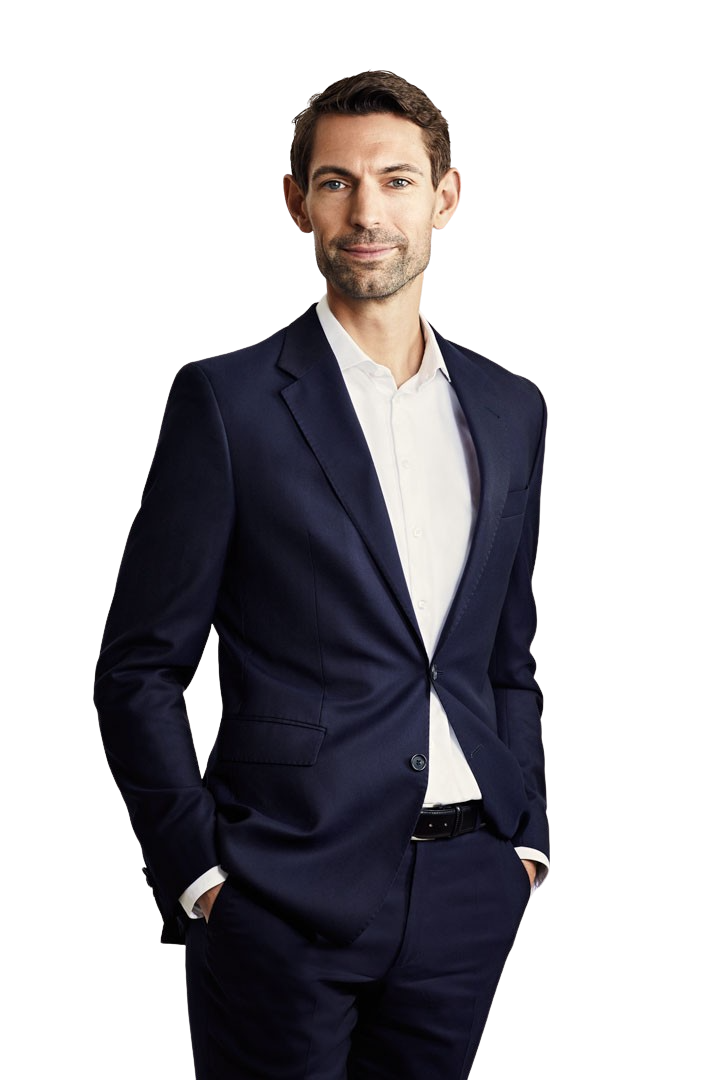
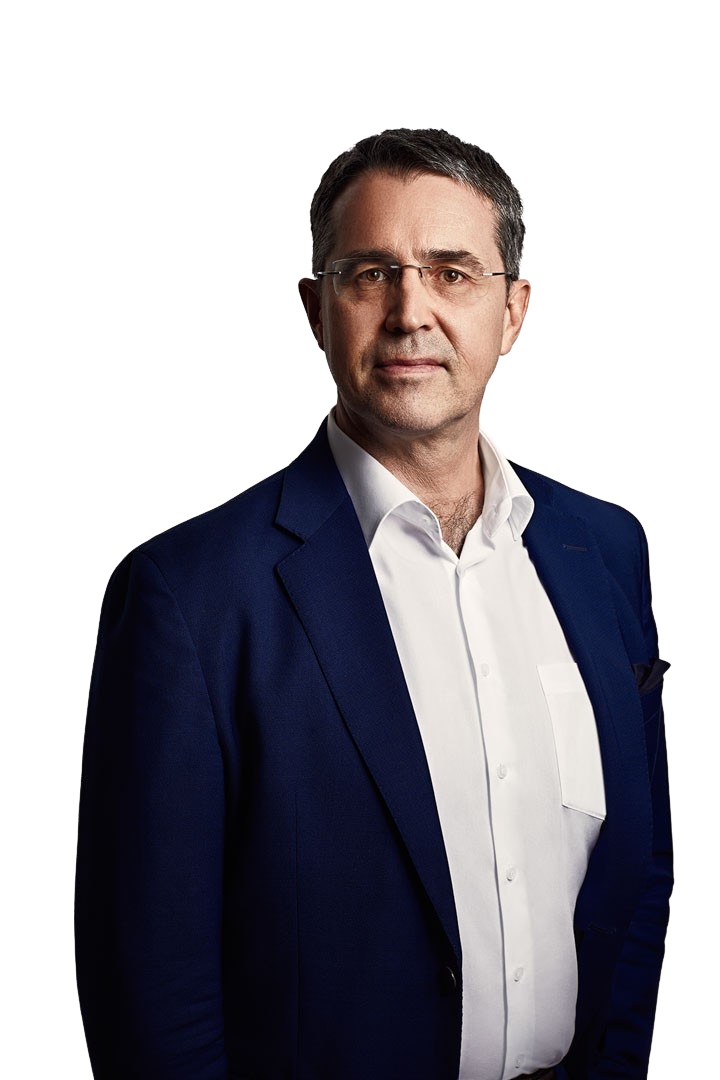
Dr. Juergen Simon (1986) is Associate Partner at Berylls by AlixPartners (formerly Berylls Strategy Advisors), an international strategy consultancy specializing in the automotive industry. He is an expert in sales and corporate strategies as well as M&A and can look back on many years of consulting experience.
Dr. Juergen Simon has been advising automotive manufacturers and suppliers since 2011 and has in-depth expert knowledge in the areas of holistic strategy development, business models and commercial due diligence. He also focuses on market entry strategies and topics related to the „Software Defined Vehicle“.
Prior to joining Berylls Strategy Advisors, he worked as senior consultant at the Droege Group, a consulting and investment firm.
As a graduate economist from the University of Hohenheim, he completed his doctorate at the Institute of Management at the Karlsruhe Institute of Technology (KIT) before joining Berylls.
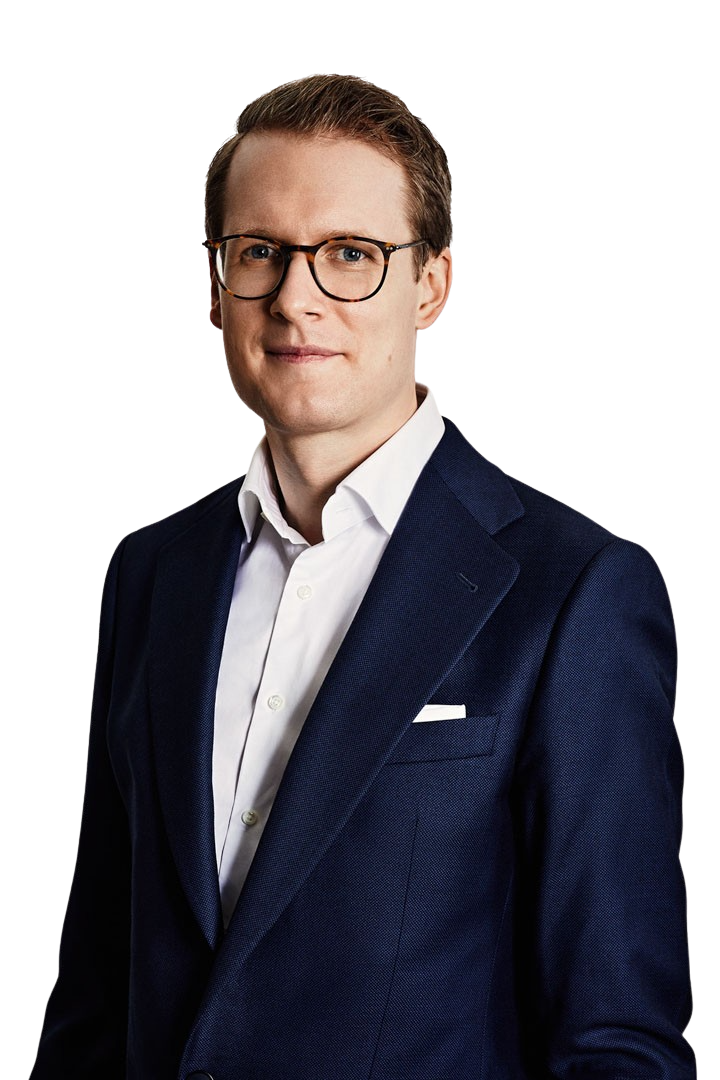
erylls study on customer perceptions of manufacturers' sustainability initiatives
Download the full press release now!
The automotive industry is undergoing a major transformation, as sustainability becomes a defining issue for the public as well as governments and regulators. In addition to ever-stricter environmental legislation, customers are growing increasingly aware of the environmental impact of their choices, so that OEMs must integrate sustainability into the core of their operations. It is no longer enough for manufacturers to produce electric cars and reduce their footprint in the sourcing and production of their vehicles, however. Rather, manufacturers must develop and deliver a comprehensive and cohesive customer experience that embodies sustainability, right across the first contact with the customer to the ownership lifecycle. Now that all the major OEMs have battery electric vehicles in their portfolio, manufacturers are finding it harder to differentiate their products on sustainability, even though this is becoming an important purchase criterion for customers.
What’s more, electric vehicle sales are proving to be erratic rather than on a straight upward trajectory. This is true especially in countries where governmental incentives are changing, and/or where the public charging infrastructure is still struggling to catch up with the availability and take-up of electric vehicles. A further pressure takes the form of new players in the market, particularly as Chinese manufacturers enter the electric vehicle industry with credible offerings, pushing western OEMs to rethink their strategies for attracting customers and reinforcing their brand loyalty. All of this is shifting the focus from the product to the wider customer experience as the key to sustainability-related differentiation. So, let‘s put ourselves in the customer‘s shoes…
Curious? Read the full article now!
Dr. Jan Burgard (1973) is CEO of Berylls Group, an international group of companies providing professional services to the automotive industry.
His responsibilities include accelerating the transformation of luxury and premium OEMs, with a particular focus on digitalization, big data, connectivity and artificial intelligence. Dr. Jan Burgard is also responsible for the implementation of digital products at Berylls and is a proven expert for the Chinese market.
Dr. Jan Burgard started his career at the investment bank MAN GROUP in New York. He developed a passion for the automotive industry during stopovers at an American consultancy and as manager at a German premium manufacturer. In October 2011, he became a founding partner of Berylls Strategy Advisors. The top management consultancy was the origin of today’s Group and continues to be the professional nucleus of the Group.
After studying business administration and economics, he earned his doctorate with a thesis on virtual product development in the automotive industry.
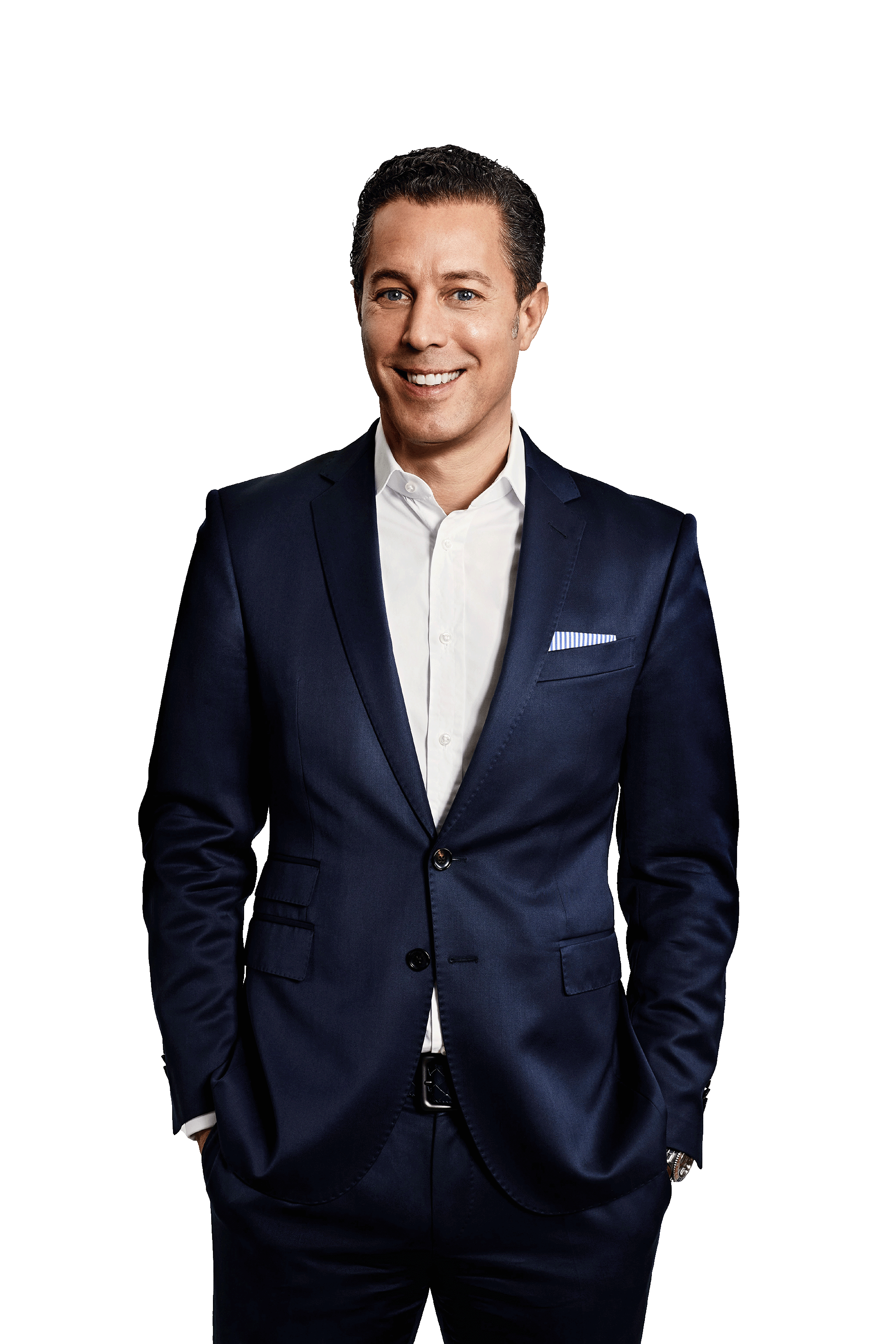
ur analysis shows Hungary remains a promising long-term bet for OEMs and suppliers - provided they conduct rigorous due diligence before investing
Since the end of the Cold War, Hungary has proved an attractive manufacturing base for some of the world’s leading automotive OEMs and suppliers. However, the selling points that first drew international companies to Hungary, such as a relatively low-cost workforce and proximity to western European markets, are no longer sufficient on their own to justify major investments by global players. Other factors that need to be considered range from Hungary’s currently problematic relations with many other EU countries to a skills shortage in sectors that are critical to electric vehicles (EVs).
We believe that Hungary will remain a significant location for international automotive companies as recent announcements and investment activities by Magna and Boysen proof. At the same time, OEMs and suppliers will need to make smart decisions that take into account Hungary’s ability to serve as a cost-efficient manufacturing base as the transition to EVs accelerates.
This location assessment analyses the advantages and possible risks of expanding or establishing manufacturing operations in the country. In all cases, OEMs and suppliers should aim to achieve the following goals when deciding whether to initiate or increase investments:
In 2021, Hungary’s automotive industry included 491 companies with a combined workforce of 98,583 employees, according to data compiled by Germany Trade & Invest (GTAI), part of Germany’s economics ministry. Total production value reached €25bn, triple the equivalent figure in 2010, with around 90 percent of all vehicles exported, including 394,302 passenger cars.
Hungary’s car industry landscape includes a range of global OEMs and suppliers, led by German players, which have recently confirmed their commitment to Hungary with significant investment decisions. For example, BMW announced in November 2022 that it plans to invest more than €2bn over the next three years at its new plant in Debrecen, where it will produce around 150,000 next-generation “Neue Klasse” EVs annually, as well as high-voltage batteries for the vehicles.
Meanwhile, Mercedes-Benz will spend more than €1bn between 2022 and 2025 at its Kecskemét factory to develop two new EV platforms for more advanced, high-value vehicles; and in the same period, Audiwill invest €301 million to increase production of electric motors at its factory in Györ, one of the world’s largest engine plants.
It is not just major European automotive companies which are ramping up production in Hungary. In September 2022 NIO, one of China’s “Big Three” EV manufacturers, announced plans to supply battery swap stations to its expanding European network from the company’s first overseas plant at Biatorbagy, near Budapest, which will also serve as NIO’s regional R&D, maintenance and training center.
The common theme of all these spending programs is of course the global transition to electric mobility, which is also generating significant investment in Hungary by suppliers. Hungary will have the world’s fifth largest lithium-ion battery manufacturing capacity by 2025, according to research last year by S&P Global, with China’s CATL playing a prominent role. CATL plans to invest €7.34bn in an additional 100-gigawatt hour battery plant in Debrecen aimed at serving nearby customers’ factories, including Mercedes-Benz, BMW, Stellantis and Volkswagen.
Other major international battery manufacturers with expansion plans in Hungary include Samsung SDI, which in late 2022 was discussing an additional plant in Hungary with BMW.
At the same time, global suppliers of other EV parts and technologies are making big bets on Hungary as a manufacturing and R&D base, with German players once again in the forefront. For example, in September 2021 Schaeffler opened a new plant in the western city of Szombathely which only manufacturers electric mobility parts, with production scheduled to increase from 800,000 units in 2023 to 1.8 million units by 2029. Another illustration is Continental’s Center for Deep Machine Learning in Budapest, opened in 2018, which focuses on research into artificial intelligence (AI) applications for automated driving systems.
Just recently the Canadian Tier1 supplier Magna announced it’s plans for a new plant in Vecsés to deliver body and chassis parts to “two German premium OEMs”.
These are eye-catching investments, yet the full picture is more nuanced – for every “good news” press release about a new plant or R&D center in Hungary, there is often another company which has quietly decided that the country currently does not tick all the right boxes as a production base.
Hungary already has a well-developed electric mobility industry ecosystem, as the examples we have highlighted demonstrate. Yet beyond this essential precondition, investors need to weigh up the main advantages and risks associated with investing in the country.
The positives
The negatives
OEMs and suppliers that are considering whether to invest in Hungary for the first time, or expand their existing footprint there, can utilize our range of risk analysis and revenue scenario modelling tools for the country. For example, we have developed a dashboard for analyzing potential revenue scenarios when defining Hungary production footprints (see Figure 1).
Figure 1: Hungary revenue scenario dashboard for different production footprints
REVENUE SCENARIO SPOTLIGHT HUNGARY DEEP DIVE CELL CONTACTING SYSTEMS
[47°30’0.0″N 19°0’0.0″E, HUNGARY]
Source: © 2022 Mapbox © OpenSteetMap
Our dashboard enables companies to enter specific product data, relevant production platforms and selected timelines, in order to derive detailed sales planning scenarios based on customized revenue and profitability forecasts (see Figure 2).
Figure 2: Example of revenue scenarios using the Hungary dashboard
REVENUE SCENARIO SPOTLIGHT HUNGARY DEEP DIVE CELL CONTACTING SYSTEMS
[47°30’0.0″N 19°0’0.0″E, HUNGARY]Source: Berylls Strategy Advisors
In the automotive industry, as in other sectors, Hungary continues to benefit from the exodus of production capacity from western to eastern Europe, which was triggered by the end of the Cold War. Yet this is no longer a straightforward story of companies seeking a nearby source of relatively cheap, reasonably skilled labor. The world has moved on, and so has the industry, from the age of fossil fuel vehicles toward the era of electric mobility.
In this context, we believe that Hungary merits both close attention by OEMs and suppliers considering major manufacturing investments, and rigorous, comprehensive due diligence. Like its language, the country itself is not easy for foreign investors to understand. Yet with sufficient research, Hungary remains a viable, long-term base for international automotive players.
Dr. Alexander Timmer (1981) joined Berylls by AlixPartners (formerly Berylls Strategy Advisors), an international strategy consultancy specializing in the automotive industry, as a partner in May 2021. He is an expert in market entry and growth strategies, M&A and can look back on many years of experience in the operations environment. Dr. Alexander Timmer has been advising automotive manufacturers and suppliers in a global context since 2012. He has in-depth expert knowledge in the areas of portfolio planning, development and production. His other areas of expertise include digitalization and the complex of topics surrounding electromobility.
Prior to joining Berylls Strategy Advisors, he worked for Booz & Company and PwC Strategy&, among others, as a member of the management team in North America, Asia and Europe.
After studying mechanical engineering at RWTH Aachen University and Chalmers University in Gothenburg, he earned his doctorate in manufacturing technologies at the Machine Tool Laboratory of RWTH Aachen University.

oftware development and deployment is emerging as one of the biggest challenges to incumbent OEMs’ dominance of the global automotive market. Established automakers need a new software innovation model, and moving to open source software is a compelling strategy.
When Chinese automakers lifted the curtain on their latest state-of-the-art digital vehicle innovations at the 2023 Shanghai Motor Show they laid down a marker for all automakers. A new breed of OEMs had arrived, and they had digital in their DNA. By building and deploying auto software faster and more efficiently than their incumbent rivals they proved that software is already one of the biggest challenges to incumbent OEMs’ dominance of the global automotive market.
Why is this, when incumbent OEMs have decades of experience in refining auto technology development cycles? Our experience with multiple established brand automakers suggests that standard innovation and supplier management practices are failing to meet the demands of rapid, iterative and collaborative software evolution. These ways of working are unable to cope with the number of software variants demanded, they result in conflict with legacy systems, they fail to deliver effective abstraction layers for simplification and to generate sufficient reusable content, and they are too slow.
Underlying these challenges is the fact is that the standard innovation model does not encourage equal-partner collaboration. Creating the software-defined vehicle demands digital-first skills, and integrated working models that reflect the collaborative ecosystem in which software development flourishes.
Incumbent OEMs have already undertaken several approaches in their attempts to gain momentum in the rapidly evolving field of automotive software. They have tried strategic alliances with big tech suppliers of proprietary software. They have tried building their own dedicated software houses. They have tried reproducing the agile working models familiar to IT businesses, grafting some elements of these onto legacy methods of planning and executing. None of these have really worked – and meanwhile, development costs are ballooning and returns on investment in data are disappointing.
It is time for a new strategy.
Many established automakers gravitate naturally to the proprietary or ‘closed source’ software model. This instinct is in their manufacturing DNA, having often spent decades refining their own brand-defining proprietary technology. Patented software offered by technology companies such as Microsoft and Adobe comes with the advantage of IT development and integration support – but users are unable to modify or add to the source code. Open source software (OSS) is different: the source code is freely available for all users to inspect, improve, edit or otherwise develop, and under most OSS licenses the only limiting requirement is for the user to publish their code modifications in the software repository.
The OSS model is tested and widespread. Although users may not realize it, more than 70% of all software in use is open source. Developers and end customers often prefer OSS for its superior stability, security and capacity for rapid development and bug elimination; this is one reason why in 2019 IBM acquired Red Hat, one of the world’s largest OSS developers. In many respects, the innovation model behind OSS resembles the unstructured collaborative model that many automakers are already trying to emulate. So it is surprising that, with the exception of infotainment, where OSS operating systems such as Android are already in use, software under OSS licenses still plays a very limited role in the automotive sector.
The OSS approach can be shown to lower cost and improve innovation speed, and thereby increase competitiveness. It reduces cost because of the resource sharing that is intrinsic to OSS, and also minimizes contractual complexity through community ownership of software developments. It lessens technical complexity with better documentation through the simplification of data (usually known as abstraction) that is part of the OSS model, and it helps users to grow collaborative learning and development skills to a level that is unlikely to be achieved in proprietary software provider/user relationships.
Some automakers already understand these advantages and are deploying OSS at scale. One example is Mercedes, which has for six years now been employing an open source strategy that combines free and open source software. Auto supplier Bosch has co-created an OSS-focused ‘digital.auto’ initiative to improve adoption of digital best-practice in the automotive industry and to generate a repository of interoperable software development tools. Bosch is also involved in the ELISA (Enabling Linux In Safety Applications) project, an initiative from the OSS operating system Linux designed to develop and win certification for Linux-powered safety-critical applications with wide ranging uses in the automotive industry. And most recently, Bosch subsidiary ETAS announced a strategic collaboration with aforementioned Ret Hat on in-vehicle basic software layers. A great range of ‘mixed-criticality’ OSS applications is also being developed by the SOAFEE (Scalable Open Architecture For Embedded Edge) project supported by VW and auto supplier Continental.
Many organizations see OSS as a risk to their business, and to some extent their concerns are valid. Yet the rewards for OSS adoption in an environment where companies need to shrink technology development timelines and embrace more collaborative ways of working are great, while the potential pitfalls are over-estimated. The challenge for companies is to minimize risk, and leverage the inherent advantages of an open source approach.
Companies are often unwilling to invest resources in a technology base that they do not own – but proprietary software users do not own the software they deploy either, they merely rent it. They also have questions over security, safety and regulation of OSS applications and operating systems – but addressing these issues directly through the growing number of OSS deployment initiatives may be a better strategy than outsourcing responsibility for mission-critical aspects of their technology stack.
To diminish risk, companies should consider adopting OSS as a core approach where certain conditions are in place. The levels of standardization and abstraction in the selected OSS should already be high, to control development costs and maximize usability. The potential resource savings from OSS adoption should also be high. And finally, the relevance of differentiation should be minimal, meaning that OSS adoptions should concentrate on the lower levels of the software stack, rather than on customer-facing applications where software becomes visible and differentiation is commercially important.
Automakers are not short of choices for OSS development platforms. They include the Automotive Grade Linux Project, a Linux Foundation collaborative project to bring together suppliers and automakers and create a complete software stack for the connected car; Kubernetes, a software ‘container’ operating sub-system originally designed by Google engineers that is emerging as a powerful cloud application for managing multiple data hungry objects such as cars; and the Red Hat In-Vehicle Operating System, which is extending Linux to driver assistance systems.
As with all innovation choices, opportunities must be matched with real world organizational needs and capacities. Automakers will need to develop a detailed picture of where and how OSS solutions can be applied in their software stacks, and to encourage and enable suppliers to adopt OSS approaches, which include providing resources for joint projects and legal liability cover.
The supplier base cannot be fully leveraged without accepting that a degree of risk-taking is inherent in the collaborative model. Since competitive pressure from digitally native automakers will eventually enforce that model sooner or later, it makes sense for established OEMs to adopt it now and begin to benefit from a reduction in the development burden. The opportunity is there to take action before the industry’s widely-recognized strategic crisis turns into a financial one.
Today, there is a growing risk that automakers begin to lose innovation capacity to both established technology companies and start-ups, as skilled employees see that the attempt to create software-defined vehicles on the old siloed and proprietary development model is failing. Yet OEMs still have know-how and structural advantages that they can leverage: the automotive industry remains dependent on domain-specific expertise and the ability to orchestrate technology and suppliers in a complex regulated environment.
Established automakers understand issues of feasibility and the real value-add of technology. They appreciate that new approaches like OSS, with its radically different concepts of both ownership and development process, demand gradual adoption with a clear vision of where the business case lies.
And that business case can be stated simply. The choice is to establish an alternative ‘automotive-born’ software environment with the potential to succeed where the standard model is clearly failing – or to run out of time and money, soon.
Dr. Matthias Kempf (1974) was one of the founding partners of Berylls Strategy Advisors in August 2011. He began his career with Mercer Management Consulting in Munich, Germany, in 2000. After earning his doctorate degree and further consulting work at Oliver Wyman (formerly Mercer Management Consulting), he joined the management of Hilti Germany in 2008. At Berylls, his area of expertise is new mobility services and traffic concepts. In addition, he is an expert in developing and implementing new digital business models, and in the digitalization of sales and after sales.
Industrial engineering and management studies at the University of Karlsruhe, Germany, doctorate degree at Ludwig Maximilian University, Munich, Germany.
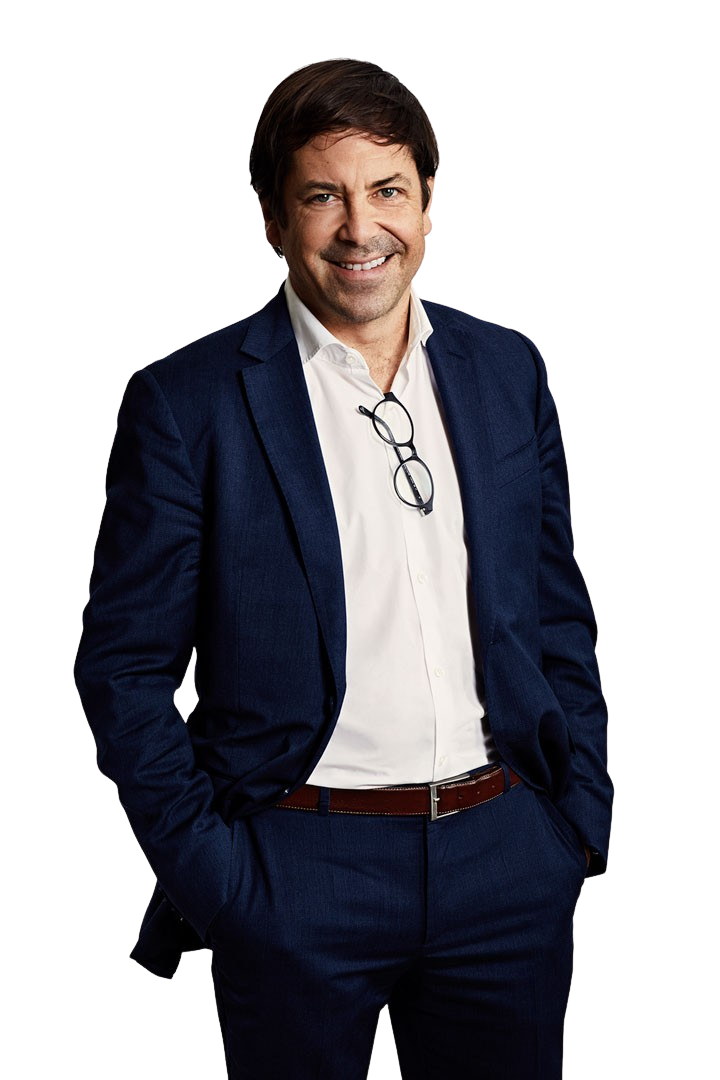
Christian Kaiser (1978) is Partner and Head of IT at Berylls by AlixPartners (formerly Berylls Strategy Advisors), specialising in software and digitalisation. He started his career at DaimlerChrysler AG in 1997 and has 27 years of industry and consulting experience in the automotive sector and has worked as CDO, CIO and CEO in various international OEMs and software companies.
Mr Kaiser has also held roles as chairman or board member of various companies in the software industry.
At Berylls, he specialises in the areas of software defined vehicles, software development, digital business models, digital operating models and software task forces.
Christian holds a degree in ‘Business Economist (EBW)’ from the University of Applied Sciences Würzburg.
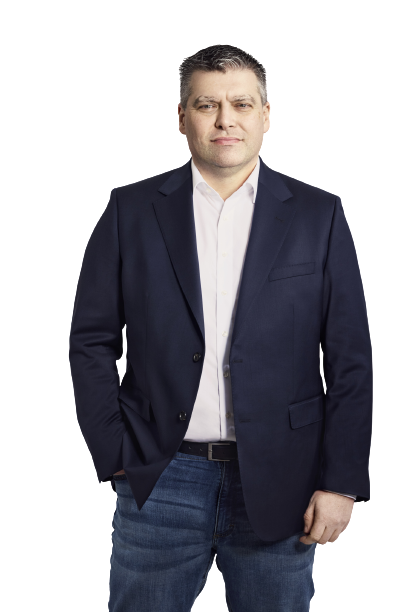
Automotive e-commerce has been around in various forms for more than 20 years. From the online-first used car sector to Tesla’s “5-Click” online purchase journey for new EVs, the range of digital automotive commerce models is already extensive. However, for traditional OEMs, the level of engagement with transaction across digital channels remains marginal. The full potential of digital automotive commerce is yet to be unleashed.
Automotive OEMs continue to operate a largely dealer-dominated sales model that gives limited access to the customer and little control over final prices. Manufacturers continue to communicate with customers nearly entirely with brand focus and lack the ability to systematically form the customer journey towards in the pursuit of transactions.
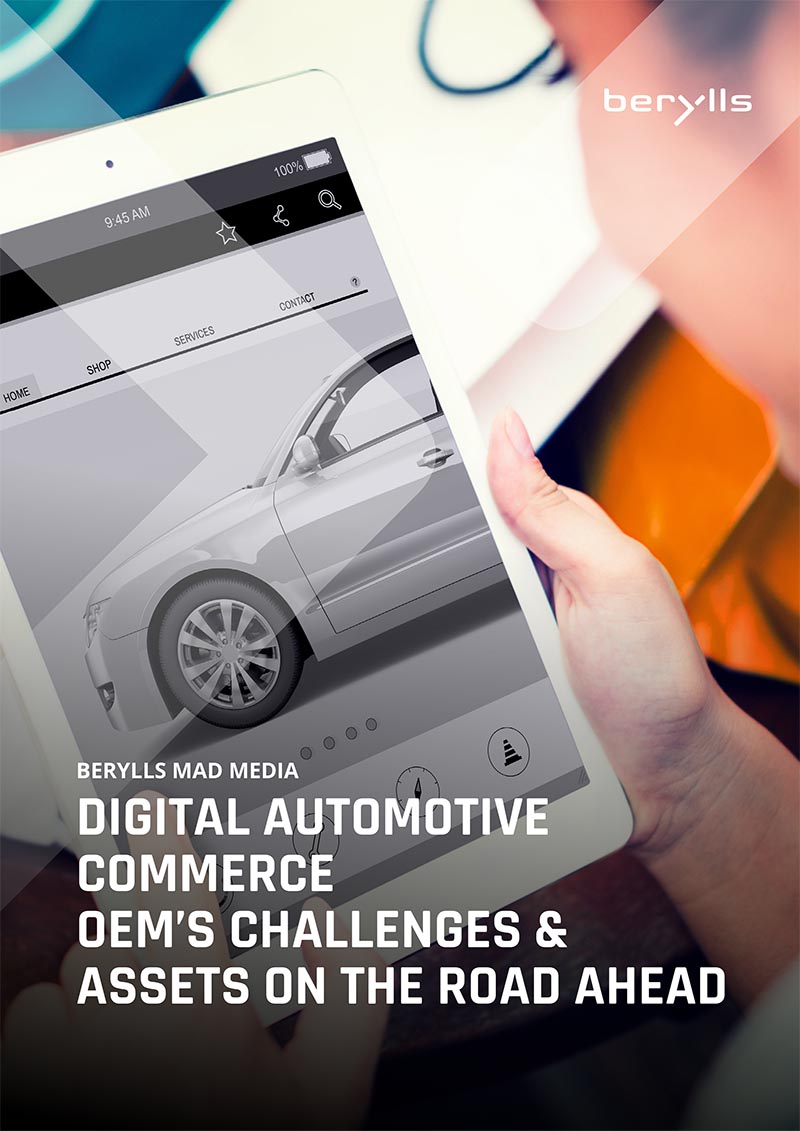
abattschlacht in der Automobilbranche?
Tesla senkt die Preise drastisch – VW, Ford, BMW und Co. reagieren unterschiedlich. „Alle kommen aus dem Verknappungsparadies“, meint Jan Burgard von Berylls, „jetzt aber haben wir wieder Überkapazitäten und die Lieferketten haben sich entspannt. Der Wettbewerb spielt sich im Volumensegment ab.“ Der Vorsprung im batterieelektrischen Zeitalter ist nur mit dem richtigen Timing möglich. „Make or break!“ Ist Elektromomilität Chance oder Sargnagel für die Unternehmen? Burgard rät: „Grundsätzliche Strukturen in Frage stellen, sonst kommt man ins Hintertreffen – unabhängig von der Antriebsform.“
Dr. Jan Burgard (1973) ist CEO der Berylls Group, einer internationalen und auf die Automobilitätsindustrie spezialisierten Unternehmensgruppe.
Sein Aufgabengebiet umfasst die Transformation von Luxus- und Premiumherstellern, mit besonderen Schwerpunkten auf Digitalisierung, Big Data, Start-ups, Connectivity und künstliche Intelligenz. Dr. Jan Burgard verantwortet bei Berylls außerdem die Umsetzung digitaler Produkte und ist ausgewiesener Spezialist für den Markt China.
Dr. Jan Burgard begann seine Karriere bei der Investmentbank MAN GROUP in New York. Die Leidenschaft für die Automobilitätsindustrie entwickelte er während Zwischenstopps bei einer amerikanischen Beratung und als Manager eines deutschen Premiumherstellers.
Im Oktober 2011 komplettierte er die Gründungspartner von Berylls Strategy Advisors. Die Top-Management-Beratung ist die Basis der heutigen Group und weiterhin der fachliche Nukleus aller Einheiten.
An das Studium der Betriebs- und Volkswirtschaftslehre, schloss sich die Promotion über virtuelle Produktentwicklung in der Automobilindustrie an.
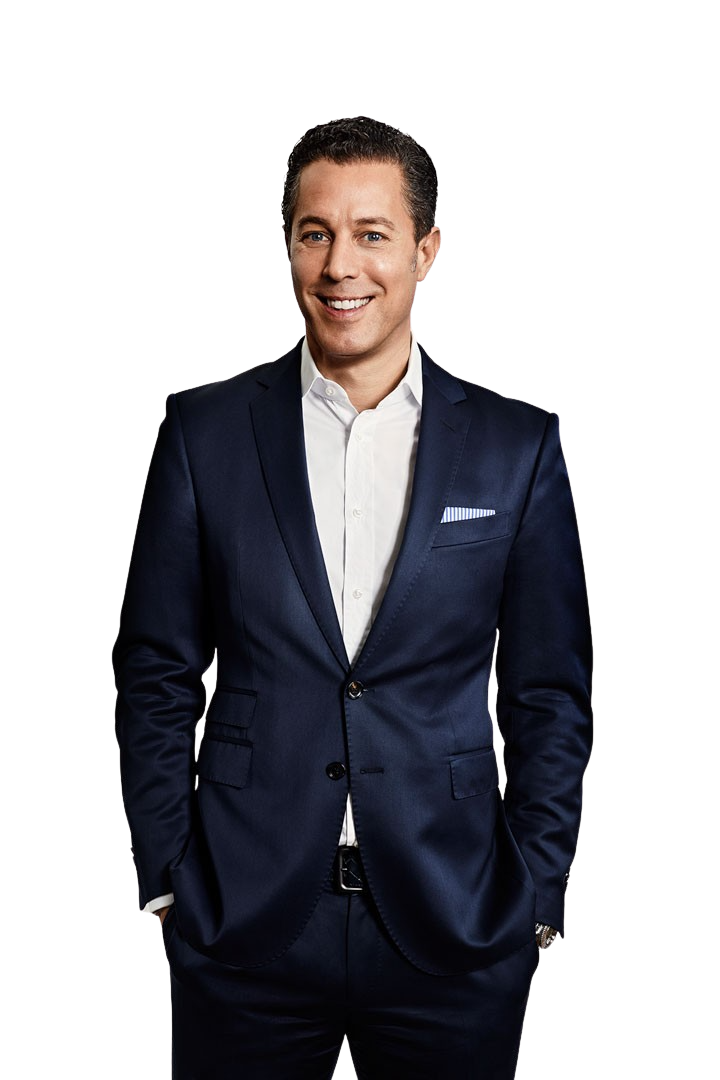
ERYLLS ERWEITERT SEIN PORTFOLIO UM HATZ COMPONENTS, EINEN AUSGEWIESENEN SPEZIALISTEN FÜR INDUSTRIEMOTORENKOMPONENTEN
Download the full press release now!

Andreas ist seit Januar 2020 als Mitgründer und Geschäftsführer bei Berylls Equity Partners tätig. Berylls Equity Partners investiert, als Beteiligungsgesellschaft der Berylls Gruppe, in Unternehmen der Mobilitätsindustrie, die sich in Sondersituationen befinden.
Andreas ist Experte in den Bereichen Private Equity, Mergers & Acquisitions und Unternehmensführung.
Nach zehn Jahren im Bereich Transaktionsberatung mit Schwerpunkt im Mittelstand wechselte Andreas im Jahr 2014 in den Beteiligungsbereich. Dort hat er seitdem in leitender Funktion eine zweistellige Anzahl an Firmenübernahmen und -verkäufen begleitet.
Andreas ist ausgebildeter Diplomkaufmann mit einem Abschluss von der Universität Trier und hält einen Master of Science in Business Abschluss der Handelshøyskolen BI.
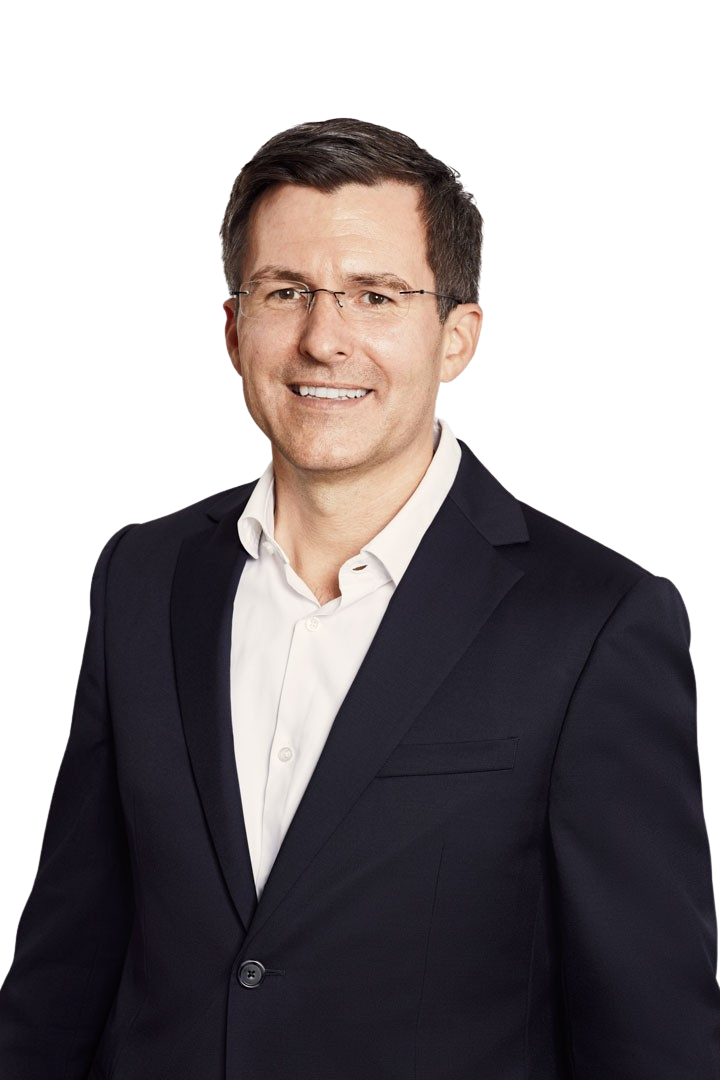
Rising cost for raw material, insecure supply chains and ever-increasing pressure on sustainability goals: The need and the upside for sustainability in the value chains are increasing drastically. Recalibrating the value chains and transforming towards a circular economy becomes a must for those who want to last.
Four pillars define the circular economy in the automotive industry: Refurbishment, Remanufacturing, Reuse and Recycling. These 4Rs differ according to the product level which they address (vehicle, module, or parts) and the respective activities: All allowing for a better utilization of resources. To make the different elements work two aspects are critical: A functioning ecosystem and suitable products.
While refurbishment is a powerful lever on the vehicle-level and recycling is the way to go when it comes to raw material on a part-level, remanufacturing and reuse are in scope when considering the module or component-level. While reuse is often applied to second-life applications and parts where a certain wear is acceptable, remanufacturing is a powerful approach when modules lose certain performance characteristics over time but can be reconditioned to return to their original purpose.
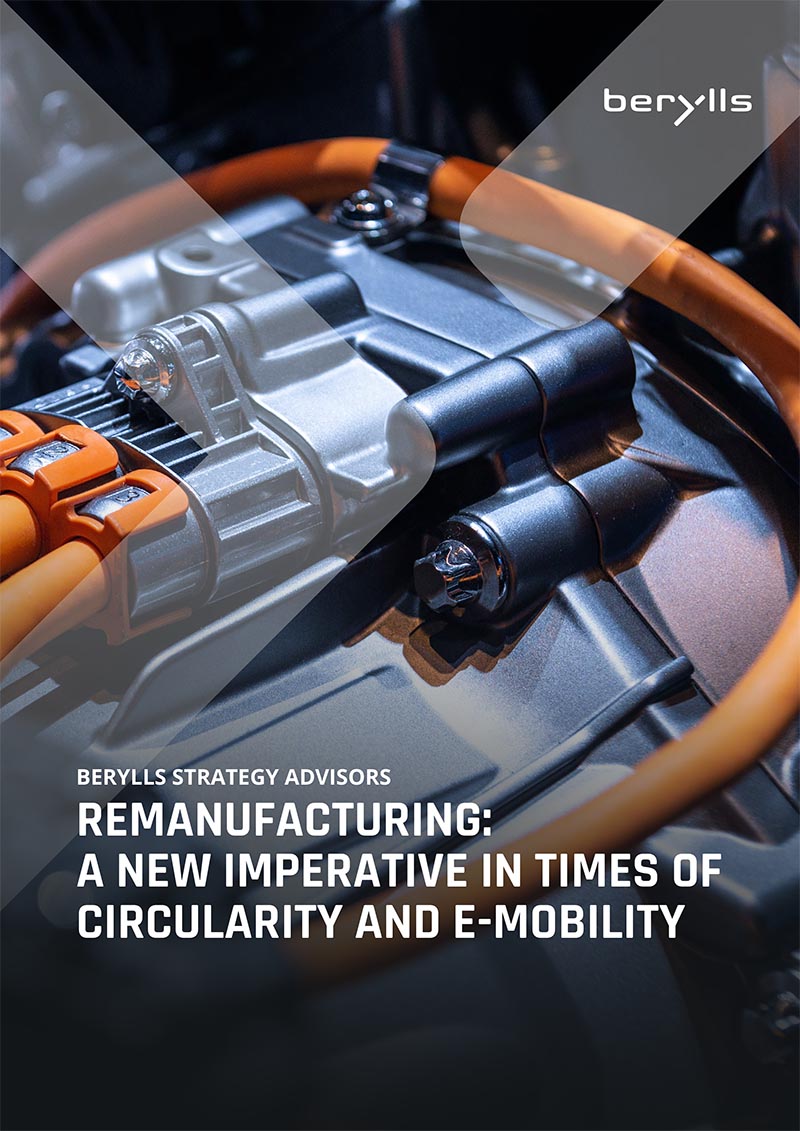
Heiko Weber (1972), Partner at Berylls by AlixPartners (formerly Berylls Strategy Advisors), is an automotive expert in operations.
He started his career at the former DaimlerChrysler AG, where he worked for seven years and was most recently responsible for quality assurance and production of an engine line. Since moving to Management Engineers in 2006, he has been contributing his experience and expertise to projects for automotive manufacturers as well as suppliers in development, purchasing, production and supply chain. Heiko Weber has extensive experience in the development of functional strategies in these areas and also possesses the operational management expertise to promptly catch critical situations in the supply chain through task force operations or to prevent them from occurring in the first place.
As a partner of Management Engineers, he accompanied the firm’s integration first into Booz & Co. and later into PwC Strategy&, where he was most recently responsible for the European automotive business until 2020.
Weber holds a degree in industrial engineering from the Technical University of Berlin and completed semesters abroad at Dublin City University in Marketing and Languages.
